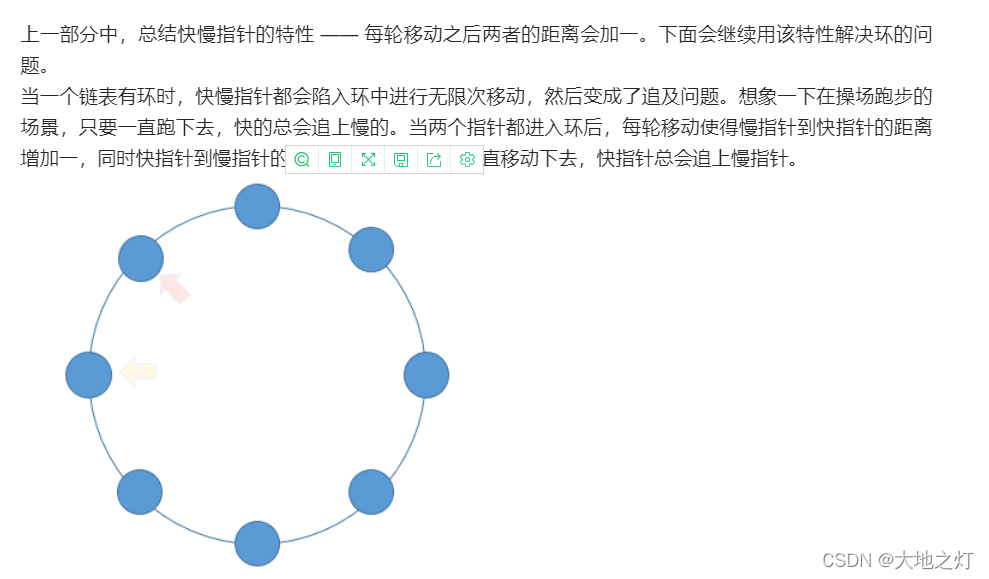NO.141 环形链表
方法一:遍历并存储节点到哈希表,如果出现重复节点,证明该链表有环
# Definition for singly-linked list.
# class ListNode:
# def __init__(self, x):
# self.val = x
# self.next = None
class Solution:
def hasCycle(self, head: Optional[ListNode]) -> bool:
seen = set()
while (head):
if head in seen:
return True
seen.add(head)
head = head.next
return False
方法二:快慢指针,一个指针快,一个指针慢,如果链表有环,快的指针一定会追上慢的指针;注意不要忘记判断链表是否结束
class Solution:
def hasCycle(self, head: Optional[ListNode]) -> bool:
if not head or not head.next :
return False
slow = head
fast = head.next
while(slow!=fast):
if not fast or not fast.next:
return False
slow = slow.next
fast = fast.next.next
return True
关于快慢指针链接



NO.21 合并两个有序链表


方法一:(归并排序思想;递归)
题目理解:(于评论区发现这一通俗解释)

# Definition for singly-linked list.
# class ListNode:
# def __init__(self, val=0, next=None):
# self.val = val
# self.next = next
class Solution:
def mergeTwoLists(self, list1: Optional[ListNode], list2: Optional[ListNode]) -> Optional[ListNode]:
# 归并排序思想
# l1 为空时,列表为l2剩余部分;l2为空时,列表为l1剩余部分
if not list1: return list2
if not list2: return list1
# 数组升序合并
if list1.val <= list2.val:
list1.next = self.mergeTwoLists(list1.next,list2)
return list1
else:
list2.next = self.mergeTwoLists(list1,list2.next)
return list2
NO.203 移除链表元素
题目:




